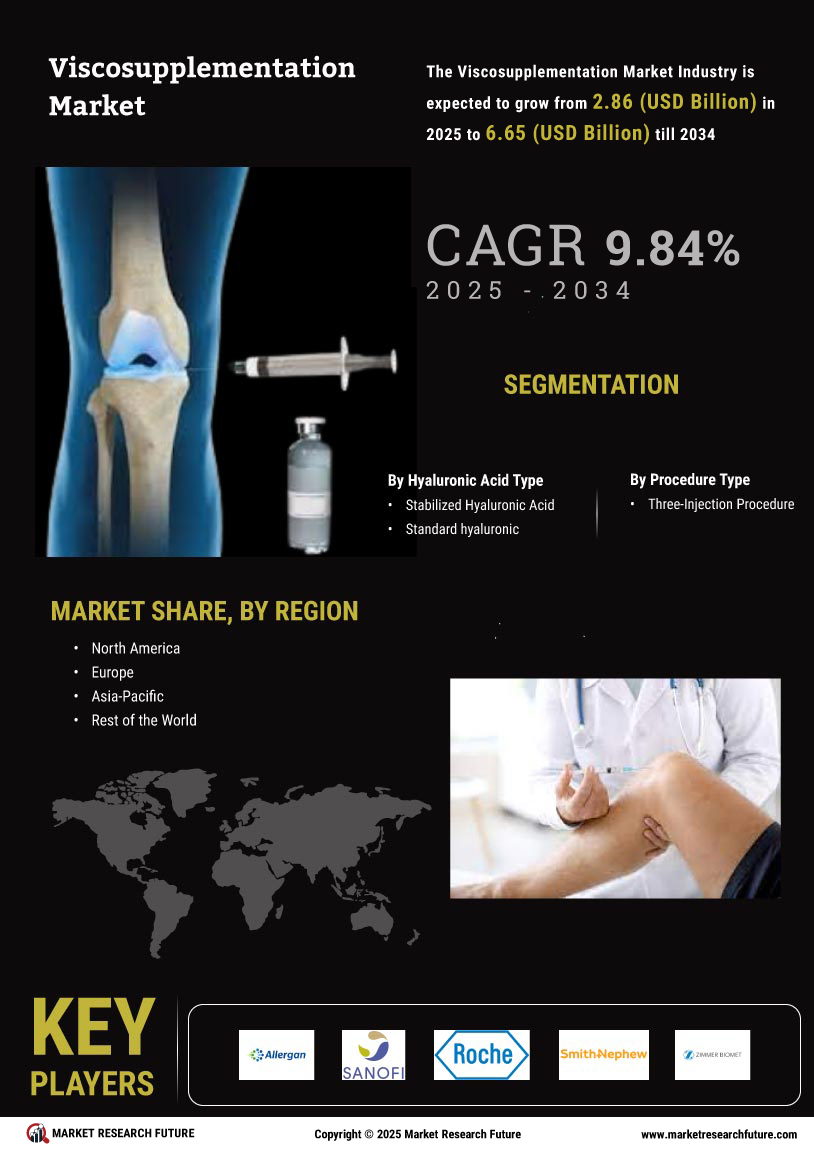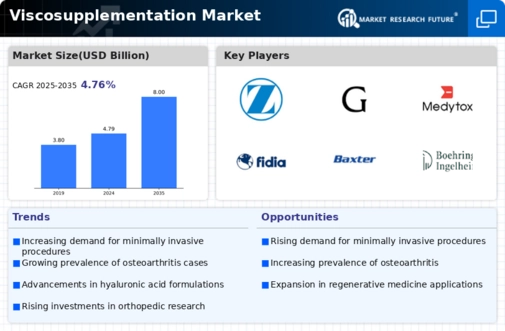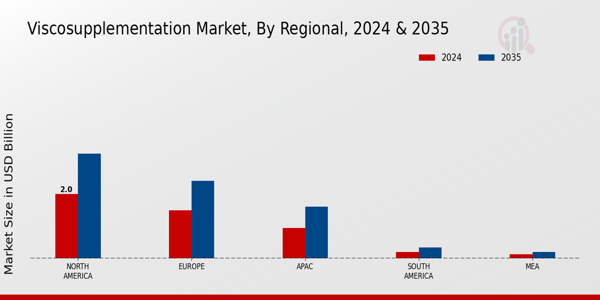Market Growth Projections
The Global Viscosupplementation Market Industry is projected to experience substantial growth over the next decade. With a market value of 4.79 USD Billion in 2024, it is expected to reach 8 USD Billion by 2035, reflecting a compound annual growth rate of 4.77% from 2025 to 2035. This growth trajectory underscores the increasing demand for effective joint pain management solutions and the expanding applications of viscosupplementation in various therapeutic areas. The market dynamics are influenced by factors such as technological advancements, rising healthcare expenditures, and an aging population, all contributing to a robust outlook for viscosupplementation.
Increase in Sports Injuries
The rise in sports-related injuries is another significant driver for the Global Viscosupplementation Market Industry. As participation in sports and physical activities increases, so does the incidence of joint injuries, particularly among younger populations. Viscosupplementation Market offers a promising solution for athletes seeking to recover quickly and effectively from joint injuries. The demand for such treatments is likely to escalate as more athletes and active individuals turn to viscosupplementation as a means of maintaining joint health and performance. This trend further supports the anticipated growth of the market, aligning with the overall increase in health consciousness.
Growing Awareness and Acceptance
There is a notable increase in awareness and acceptance of viscosupplementation therapies among both healthcare professionals and patients. Educational initiatives and marketing efforts are enhancing understanding of the benefits of viscosupplementation in managing joint pain. This shift in perception is crucial for the Global Viscosupplementation Market Industry, as it encourages more patients to seek these treatments. As a result, the market is expected to witness a compound annual growth rate of 4.77% from 2025 to 2035. This growth is indicative of a broader trend towards non-surgical interventions in orthopedic care.
Regulatory Support and Approvals
Regulatory bodies are increasingly recognizing the benefits of viscosupplementation, leading to a more favorable environment for the Global Viscosupplementation Market Industry. Approvals of new viscosupplementation products are becoming more streamlined, which encourages manufacturers to innovate and expand their product lines. This regulatory support not only enhances market accessibility but also instills confidence among healthcare providers and patients. As a result, the market is poised for growth, with projections indicating a rise to 8 USD Billion by 2035. This supportive regulatory landscape is essential for fostering advancements in treatment options.
Advancements in Medical Technology
Technological innovations in the field of viscosupplementation are propelling the Global Viscosupplementation Market Industry forward. New formulations and delivery methods are being developed to enhance the efficacy and safety of treatments. For example, the introduction of cross-linked hyaluronic acid has shown promise in extending the duration of relief for patients. These advancements not only improve patient outcomes but also increase the acceptance of viscosupplementation as a viable treatment option. As the market evolves, it is projected to grow to 8 USD Billion by 2035, indicating a robust trajectory fueled by ongoing research and development.
Rising Prevalence of Osteoarthritis
The increasing incidence of osteoarthritis globally drives the Global Viscosupplementation Market Industry. As populations age, the number of individuals suffering from joint-related disorders rises significantly. For instance, it is estimated that by 2024, the market will reach 4.79 USD Billion, reflecting the growing demand for effective treatment options. Viscosupplementation Market, which involves the injection of hyaluronic acid into the joints, offers a minimally invasive alternative to surgery. This trend is particularly evident in regions with aging populations, such as Europe and North America, where healthcare systems are adapting to manage the rising burden of osteoarthritis.




















Leave a Comment